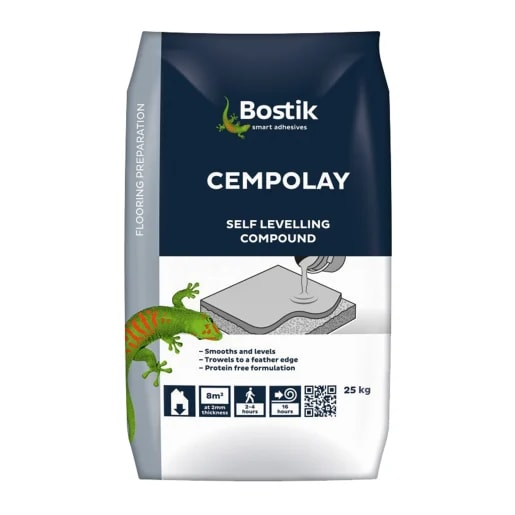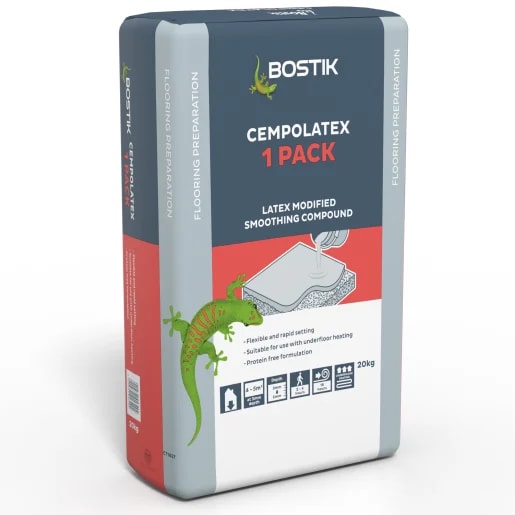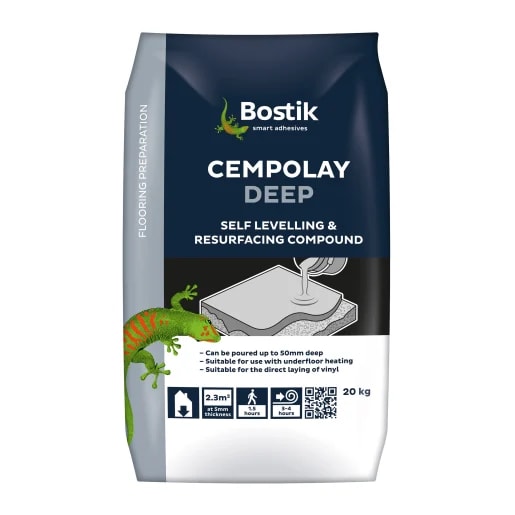Screed & Floor Levelling Compound
(3 Products)Screed and levelling compounds are materials used to create smooth, even surfaces over concrete subfloors before the final floor finish is applied. They help correct unevenness, cover imperfections, and provide a stable, level base for tiles, vinyl, wood, or carpet.
Screeds are typically thicker and used for larger-scale levelling, while self-levelling compounds are thinner, flowable mixes designed to smooth out minor surface irregularities with minimal effort. Both are essential for achieving a professional, long-lasting floor finish.
What are Screeds and Levelling Compounds?
Screeds are a layer of material, typically a blend of cement and sand, purposed to level and smooth the floor surface. They provide a solid foundation for other flooring materials such as tiles, carpet, or vinyl, and are commonly applied over a concrete subfloor, or sometimes left alone as the final floor finish.
Depending on the condition of the floor, floor screed can be applied in varying thicknesses to correct a surface imbalance. Often smoothed using a screed bar, a stable base is formed, allowing the floor to be prepped for the installation of underfloor heating or other floor finishes.
On the other hand, floor levelling compound is typically made of fine cement and polymers. It is designed to fill in low spots and irregularities in a floor.
Self-levelling compounds are typically used to smooth out unevenness, preparing concrete subfloors for additional floor coverings such as ceramic tiles, carpets, or vinyl flooring.
Types of Screeds and Levelling Compounds
- Bonded Screed - Directly bonded to a subfloor.
- Flow Screed - A liquid variant that is poured onto the subfloor, similar to levelling compounds.
- Unbonded Screed - Applied over damp-proof membranes, preventing moisture from reaching the floor finish.
- Floating Screed - Laid over insulation or underfloor heating, floating screed provides thermal and sound insulation.
- Self-levelling Compound - A flowable and automatic levelling compound that fills low spots.
- Fast Drying Compound - Engineered to cure quickly for fast installation.
- Fibre-Reinforced Screed - Contains added fibres for enhanced strength.
Applications
- Screed - Intended to create a level base on a concrete subfloor, this thin layer is ideal for preparing floors for tiles, vinyl, carpet, or areas with underfloor heating systems. To apply floor screed, it is first poured onto the prepared subfloor and spread evenly using a screed bar.
- Levelling Compound - Commonly used to level uneven surfaces and subfloors with minor imperfections, preparing them for the installation of finishing materials such as tile, vinyl, or wood. To apply a floor levelling compound, pour the mixture onto a prepared subfloor and allow it to spread; it will naturally flow into low areas.
Screed Benefits
- Flat Surface: Screed is spread across a surface to correct surface imbalances.
- Stable Base: Once set, the screed forms a strong layer, providing a solid foundation for floor finishes.
- Moisture Prevention: Unbonded Screed is applied over damp-proof membranes.
- Multiple Variants: Screed is available in various forms to suit different applications.
Levelling Compound Benefits
- Levelling Tool: Fills low spots and irregularities.
- Surface Preparation: Smooth out unevenness to prepare concrete subfloors.
- Quick Installation: The fast-drying compound variant cures quickly.
- Clean Foundation: Creates a uniform surface.
Frequently Asked Screeding & Floor Levelling Compound Questions
What are the Differences Between Screed and Levelling Compounds?
Screed is generally spread manually and sometimes requires professional assistance to guarantee an even, level layer. Meanwhile, levelling compounds are poured onto a surface, where they spread out naturally.
Is Screed Only Sand and Cement?
Screed is typically comprised of cement and sharp sand. However, industrial areas with a high volume of foot traffic may need stronger screed, particularly one that incorporates aggregates.
How Long Does Screed Take to Dry?
Allowing adequate drying time is essential for the proper setting and hardening of the screed. The duration of this can vary depending on factors like the type of material and environmental conditions.
However, it's important to guarantee that the surface is fully dry before proceeding with the final floor installation. For more information on Drying Screed check out our blog.
What are the Mix Consistencies of Screeds and Levelling Compounds?
Screed mixtures should have a semi-dry and firm consistency that allows them to maintain their shape without being overly wet or fragile. Self-levelling compounds, on the other hand, have the consistency of a thin soup which allows them to flow, eradicating the need for manual spreading.



